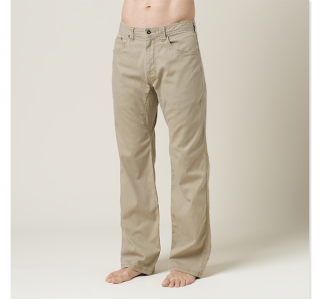Want to
give back to the community, work in a beautiful national park, and get those
hiking boots dirty? Join other Davis
Outdoor Davis will be volunteering with the Golden
Gate National Park Service Trail Crew from 9:00am to 12:00pm on Saturday May
11th doing trail restoration work on the Dias Ridge Trail in the beautiful Marin Headlands.
Together, our stewardship will help create and maintain a world-class trail
system for our community to enjoy today and in the years to come. Come on out
and join us for a day of fun!
General Work Overview: (http://
What to Wear:
Wear comfortable work clothes, long pants, and sturdy shoes or boots (no shorts or sandals).
Dress in layers for changing weather, bring hat, and wear sunscreen.
Be prepared to get dirty.
What to Bring:
Bring completed waivers (You can pick one up at the shop or print one out from the link below and drop it off at the shop)
Bring a reusable water bottle. We’ll have water stations for refills.
All necessary tools, supplies, gloves and training will be provided. If you have a pair of favorite gloves, feel free to bring those
Waiver: http://
***It is important that you:
1. RSVP with us by sending us an email at outdoordavisblog@gmail.com
2. Fill out a waiver and drop it off with us at the store.
Project Site: Dias Ridge, Marin
Meeting Location: Muir Beach Parking Lot (directions below)
Google Map to Muir Beach: https://maps.google.com/
From Davis:
Take I-80 W towards San Francisco
Take exit 33B to merge onto CA-37 W toward Novato/San Rafael
Take the exit onto US-101 S toward San Rafael/San Francisco
Proceed south on Highway 101 to the Highway 1/Stinson Beach/Muir Woods exit.
Exit at the Highway 1 exit.
Proceed on HIGHWAY 1 (Shoreline Hwy Muir
Beach
From there on, follow all the signs toStinson Beach
As Highway 1 levels out atMuir
Beach , look for the Pelican Inn &
the Muir Beach
Turn left onPacific Way
FollowPacific
Way Muir Beach
Park in theMuir Beach
..........................
If you have any further questions about the event, email us at outdoordavisblog@gmail.com
General Work Overview: (http://
What to Wear:
Wear comfortable work clothes, long pants, and sturdy shoes or boots (no shorts or sandals).
Dress in layers for changing weather, bring hat, and wear sunscreen.
Be prepared to get dirty.
What to Bring:
Bring completed waivers (You can pick one up at the shop or print one out from the link below and drop it off at the shop)
Bring a reusable water bottle. We’ll have water stations for refills.
All necessary tools, supplies, gloves and training will be provided. If you have a pair of favorite gloves, feel free to bring those
Waiver: http://
***It is important that you:
1. RSVP with us by sending us an email at outdoordavisblog@gmail.com
2. Fill out a waiver and drop it off with us at the store.
Project Site: Dias Ridge, Marin
Meeting Location: Muir Beach Parking Lot (directions below)
Google Map to Muir Beach: https://maps.google.com/
From Davis:
Take I-80 W towards San Francisco
Take exit 33B to merge onto CA-37 W toward Novato/San Rafael
Take the exit onto US-101 S toward San Rafael/San Francisco
Proceed south on Highway 101 to the Highway 1/Stinson Beach/Muir Woods exit.
Exit at the Highway 1 exit.
Proceed on HIGHWAY 1 (
From there on, follow all the signs to
As Highway 1 levels out at
Turn left on
Follow
Park in the
..........................
If you have any further questions about the event, email us at outdoordavisblog@gmail.com



















